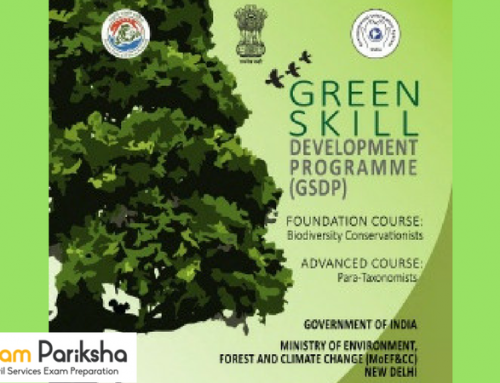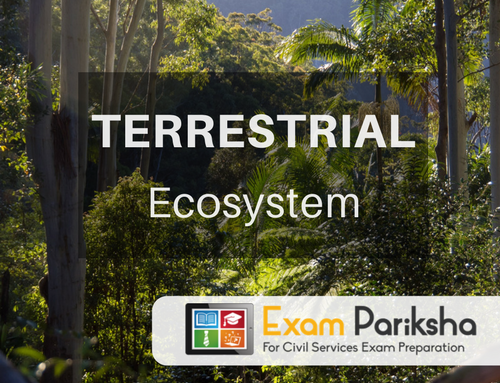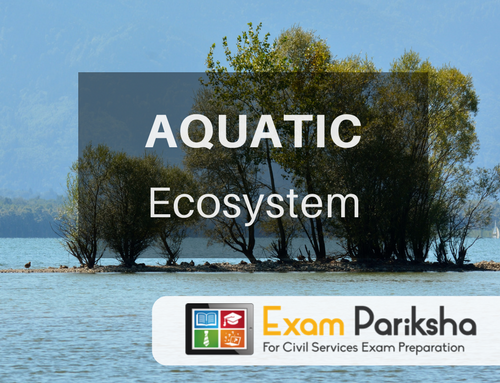Pollution in the environment is one of the most challenging problems faced by humanity in our times. With each passing year, it is causing grave and irreparable damage to the earth.
We are living in the Anthropocene era, where human activities have immense impact on the biosphere. More change has happened in the past century than the previous 250,000 years of human history. Developmental activities such as construction, transportation and manufacturing have not only depleted the natural resources but also produced global warming and acid rains and large amount of wastes that leads to pollution of air, water, soil, and oceans.
What is Pollution? It is defined as the introduction of contaminants into the natural environment that cause adverse change. Pollution can take the form of chemical substances or energy, such as noise, heat or light. Pollutants, the components of pollution, can be either foreign substances/energies or naturally occurring contaminants.
What is a Pollutant? Any substance causing nuisance or harmful effects or uneasiness on the organisms, then that particular substance may be called as the pollutant.
Types of Pollutants
The waste materials that cause pollution are of two types:
- That remain in an unchanged form for a long time and are known as persistent pollutants. For instance, pesticides, nuclear wastes, and plastics etc. Many of these are toxic in nature.
- That break down, into simple products, and are known as non-persistent pollutants, e.g., garbage. If this break down process is facilitated by living organisms, then such pollutants are referred to as biodegradable pollutants.
From ecological perspective, pollutants can be classifies as follows:
Primary Pollutants: Which persist in the form in which they are added to the environment for ex. DDT, Plastic
Secondary Pollutants: Which are formed by interaction among primary pollutants viz. PAN by interaction of NOx & Hydrocarbons
What is Environmental Pollution?
Environmental Pollution can be defined as any undesirable change in physical, chemical, or biological characteristics of any component of the environment i.e. air, water, soil which can cause harmful effects on various forms of life or property.
Air Pollution
Air pollution is the introduction of chemicals, particulate matter, or biological materials that cause harm or discomfort to humans or other living organisms, or cause damage to the natural environment or built environment, into the atmosphere.
Air Pollutant is a substance in the air that can cause harm to humans and the environment.
Air pollution is by far the most harmful form of pollution in our environment. Air pollution is cause by the injurious smoke emitted by cars, buses, trucks, trains, and factories, containing mainly sulphur dioxide, carbon monoxide and nitrogen oxides.
Carbon dioxide – It is released due to fossil fuel burning and deforestation.
Sulfur dioxide – SO2 is released due to the burning of sulfur containing compounds of fossil fuels.
Sulfur oxides – These are very dangerous to humans at a high concentration. Atmospheric Sulfur is responsible for acid rain.
Nitrogen Oxides – A number of compounds, oxides of nitrogen, are formed, primarilly by automobile engines. Oxides of nitrogen react with other compounds to produce photochemical smog.
Effects of Air Pollution
Evidence of increasing air pollution is seen in lung cancer, asthma, allergies, and various breathing problems along with severe and irreparable damage to flora and fauna.
Green House Effect and Global Warming : CO2 is a good transmitter of sunlight, it also partially restricts infrared radiation going back from the earth into space, which produces the greenhouse effect that prevents a drastic cooling of the Earth during the night. CO2 in atmosphere.
Chlorofluorocarbons (CFC), released from refrigerators, air-conditioners, deodorants and insect repellents cause severe damage to the Earth’s environment. This gas has slowly damaged the atmosphere and depleted the ozone layer leading to global warming.
Even the most natural phenomenon of migratory birds has been hampered, with severe air pollution preventing them from reaching their seasonal metropolitan destinations of centuries.
PhotoChemical Smog : It is a secondary pollutant, resulting when two pollutants, nitrogen oxide and hydrocarbons from automobile exhausts, react with one another in the presence of sunlight to produce nitrogen dioxide (N02), ozone ( 03 ) and a compound called PAN (Peroxyl Acetyl Nitrate).
Water Pollution
Water Pollution is defined as alteration in physical, chemical, or biological characteristics of water through natural or human activities and thus making it unsuitable for its designated use.
Water pollution is caused by industrial waste products released into lakes, rivers, and other water bodies, it has made marine life no longer hospitable.
We pollute water with large scale disposal of garbage, flowers, ashes and other household waste. Untreated or improperly treated waste is a major cause of pollution of rivers and environmental degradation causing ill health and loss of crop productivity.
Sources of Water Pollution:
- Municipal Waste Water
- Industrial Waste water – Coming from chemical, metallurgical, food processing industries, textile, paper industries, which discharge several organic and inorganic pollutants toxic to living beings.
- Inorganic Pollutants – They include fine particles of different metals, chlorides, sulphates, oxides of iron, cadmium, acids and alkalies.
- Organic Pollutants – They Include oils, fats, phenols, organic acids grease and several other organic compounds.
- Agricultural Wastes – Chemical fertilizers and pesticides. Fertilizers contain major plants nutrients mainly nitrogen, phosphorous, and potassium.
- In many rural areas one can still find people bathing and cooking in the same water, making it incredibly filthy.
- Acid rain also adds to water pollution in the water. I
- Thermal Pollution – Thermal Pollution of water is caused by thermal and nuclear power plants, which use water as coolants and release hot water into the original source. Sudden rise in temperature kills fish and other aquatic animals.
- Water pollution can also indirectly occur as an offshoot of soil pollution – through surface runoff and leaching to groundwater.
- Marine Pollution – Ocean are the final sink of all natural and man-made pollutants. Rivers discharge their pollutants into the sea. Discharge of oils, grease, detergents, and radioactive wastes from ships.
Noise Pollution
Noise pollution include aircraft noise, noise of cars, buses, and trucks, vehicle horns, loudspeakers, and industry noise, as well as high-intensity sonar effects which are extremely harmful for the environment.
Noise pollution is excessive, displeasing human, animal, or machine-created environmental noise that disrupts the activity or balance of human or animal life.
Sources of Noise Pollution
- Transportation systems are the main source of noise pollution in urban areas. Maximum noise pollution occurs due to one of modern science’s best discoveries – the motor vehicle, which is responsible for about 90% of all unwanted noise worldwide.
- Construction of buildings, highways, and streets cause a lot of noise, due to the usage of air compressors, bulldozers, loaders, dump trucks, and pavement breakers.
- Industrial noise also adds to the already unfavorable state of noise pollution.
- Loud speakers, plumbing, boilers, generators, air conditioners, fans, and vacuum cleaners add to the existing noise pollution.
Effects of Noise Pollution
According to the USEPA, there are direct links between noise and health. Noise pollution can damage physiological and psychological health.
High blood pressure, stress related illness, sleep disruption, hearing loss, and productivity loss are the problems related to noise pollution. It can also cause memory loss, severe depression, and panic attacks.
Soil Pollution
Soil pollution, which can also be called soil contamination, is a result of acid rain, polluted water, fertilizers etc., which leads to bad crops.
Soil contamination occurs when chemicals are released by spill or underground storage tank leakage which releases heavy contaminants into the soil. These may include hydrocarbons, heavy metals, MTBE, herbicides, pesticides and chlorinated hydrocarbons.





